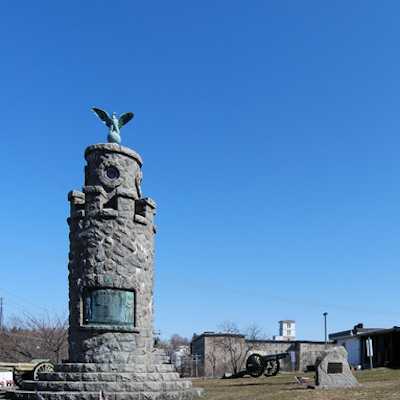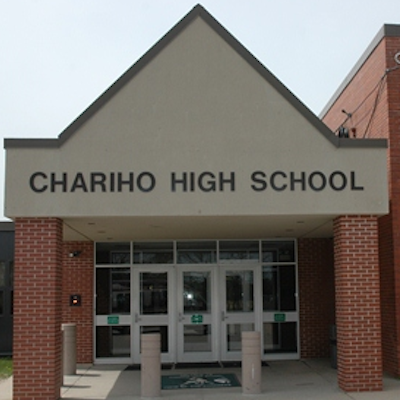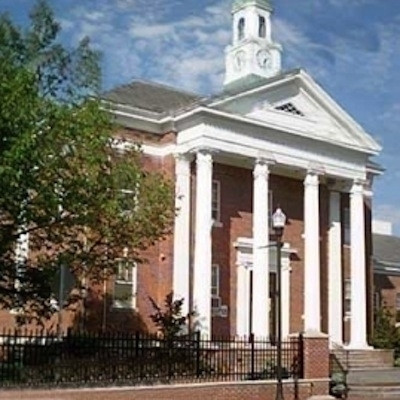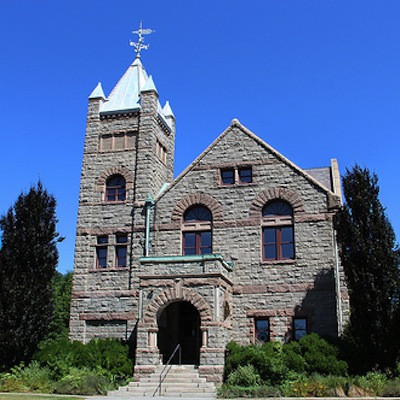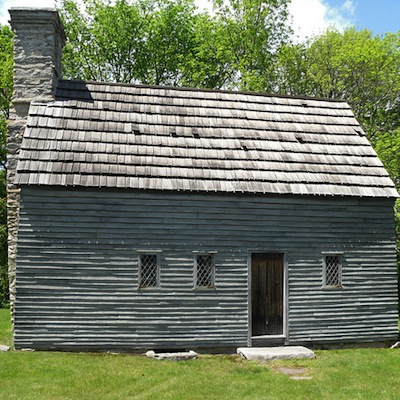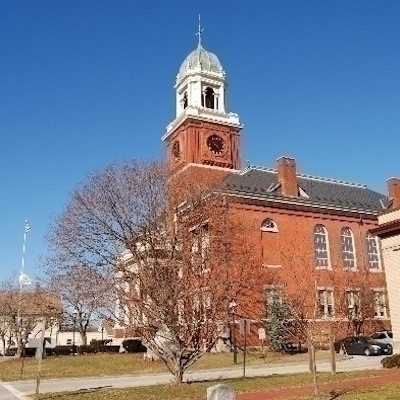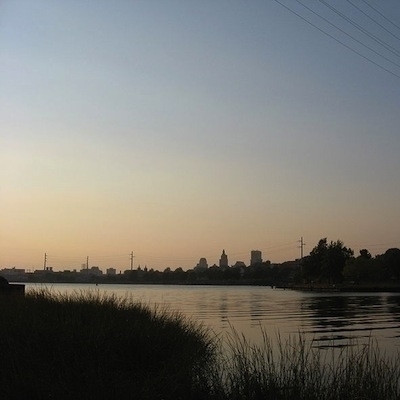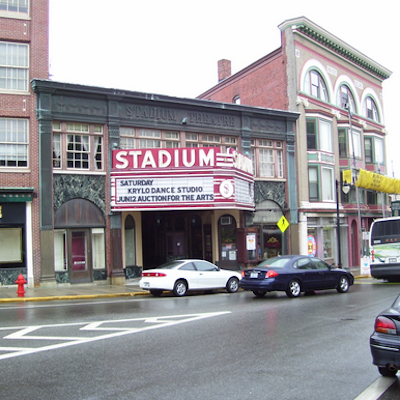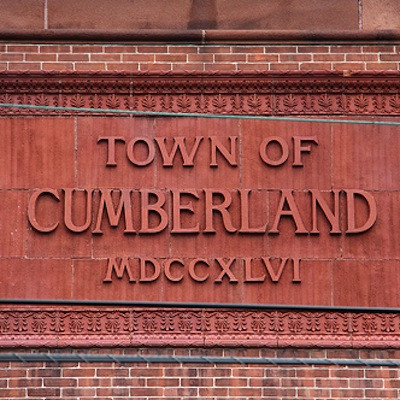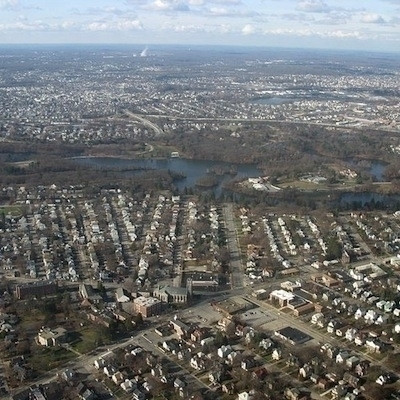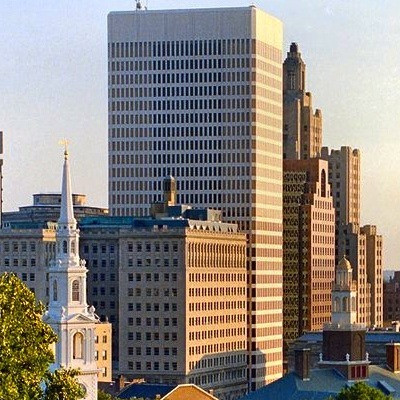Public or Private: Are RI Charter Schools Trying to Have it Both Ways?
Thursday, August 06, 2015
Their teachers are not unionized. They don’t pay into public pensions. And they are exempted from some of the rules that apply to traditional public schools. But they are funded by taxpayer dollars, are free of charge to students attending, and cannot expel students.
Are charter schools public schools or publicly funded private schools?
Charter advocates say it’s the first.
GET THE LATEST BREAKING NEWS HERE -- SIGN UP FOR GOLOCAL FREE DAILY EBLASTOfficially, charters are considered public schools by the Rhode Island Department of Education, according to spokesman Elliot Krieger. “They are entirely public schools; they are not private or nonpublic schools in any respect. We generally refer to them as ‘charter public schools,’” Krieger said yesterday.
But others say it’s not as black-and-white as that.
State Sen. James Sheehan prefers to call them “quasi-public schools.” “They like to pretend they are a new form of traditional public education. In reality, they are not,” said Sheehan, a North Kingstown Democrat who is a history teacher at Tollgate High School in Warwick.
“I characterize charter schools as privately operated but publicly funded schools,” said Jim Parisi, an organizer for the Rhode Island Federation of Teachers and Health Professionals.
Woonsocket a flashpoint for statewide debate
The question is coming to a head in a major legal battle brewing over the opening of the RISE Prep Mayoral Academy in Woonsocket. In a complaint filed in Providence County Superior Court yesterday, attorneys for the Woonsocket City Council argue that RISE should not be allowed to open because its proposed location of 1 Social Street is in a commercial zone where nonprofit schools are not allowed.
Katelyn Silva, a spokeswoman for the Rhode Island Mayoral Academies, said the zoning restriction did not apply because RISE would be considered a ‘municipal use.’
But RISE is also a nonprofit school—at least according to its articles of incorporation, filed with the state Secretary of State on November 14 of last year.
Those articles stipulate that should the school dissolve, its assets would be distributed to Rhode Island Mayoral Academies, a nonprofit association—not the taxpayers of Woonsocket, William M. Dolan, the attorney for the city council, notes in a legal memorandum filed in court.
“Its by-laws do not provide any mechanism by which the people of Woonsocket may control it or its operations, and the school (clearly) has nothing to do with Woonsocket’s municipal government,” Dolan writes.
The fact that RISE has a state charter would, if anything, make it a state use, not a municipal use, he adds. That means that RISE, like other state agencies, would need a special use permit, according to Dolan.
Advocates defend charters as public schools
A hearing on a motion asking the court to block the opening of the school is scheduled for next Tuesday.
The larger question is one with broad ramifications for the future of the charter school movement in Rhode Island.
Silva maintains that charters are public schools. Examples of ways in which they are not public schools, she said, do not change that. “Having unionized teachers and paying into a state pension system is not the definition of a public school. There are states where traditional teachers are not unionized,” she noted.
(In the case of pensions, she said mayoral academy teachers “receive competitive wages and excellent benefits packages.” For example, at Blackstone Valley Prep Mayoral Academy, teachers and staff are offered a portable 401(k) with a 5 percent match, according to Silva.)
Then there are exemptions on various regulations. Charters, for example, can have longer school day and years, have greater discretion over their budget, and localized hiring authority—all intended to foster innovation, according to Silva. But, she added, some of those same exemptions are granted to traditional public schools in other states.
And she contrasted what she described as a “few” exemptions with the many regulations that charters must follow. “Charter schools are absolutely held accountable to all state and federal academic standards as well as health and safety regulations, open meetings, and freedom of information mandates,” she said.
Millions in public funding at stake
The question matters because public funds are at stake.
In the last legislative session, charter critics argued that the schools were draining much-needed funds from regular public schools. Those arguments led to a bill mandating any new charters demonstrate that they would not have a detrimental impact on school district finances. (The bill failed to pass the General Assembly.)
But such arguments presume that charters are not real public schools—that they are not just as deserving of those funds as others, according to Silva.
“[T]he Woonsocket School District will not lose any money. It is not ‘their’ money to lose. RISE Prep students are not even going to enter the traditional district system to ‘lose’ them. You can’t lose funding you never had. And, you can’t lose funding that belongs to the student—if that student takes their money to another school, there is one less student to educate in the district building,” Silva wrote in an e-mail.
But one less student does not always translate into savings, according to Sheehan. He offers the example of classroom that ‘loses’ a few students to a charter. The ‘money follows the child’ but not all the costs do: the district still has to pay the teacher and has other fixed costs, such as pay the utility bills to keep the lights on in that classroom.
“Basically you have a situation where you have to rob Peter to pay Paul,” Sheehan said.
That logic explains why 17 school districts are claiming they lost $5.4 million in tuition payments to as many as two dozen charter schools then in Rhode Island in 2014.
One policy expert who is sympathetic to charters says there is some validity to the argument. “The public school advocates do have a point: With charters, the government is building a second public school infrastructure, and in Rhode Island the formula for money given to charters is nowhere near the marginal costs or savings to district schools for each student who switches,” said Justin Katz, the research director for the Rhode Island Center for Freedom and Prosperity.
Sheehan said districts are being forced to cut extracurricular programs, sports, school supplies and the like to make up for the losses. In a previous interview, Frank Flynn, the president of the Rhode Island Federation of Teachers and Health Professionals, noted that even as such programs are cut in the district, they are being added by charters.
Sheehan offers an example closer to home: he says his son attended kindergarten last year in North Kingstown, where it was only available for half a day. But two of the charters attended by local students have full-day kindergarten: Kingston Hill Academy and The Compass School. Sheehan said that if the district was not paying tuition to outside charters, it would have been able to provide full-day kindergarten to all students in the district. (In the previous year it was available only to certain types of underprivileged students.)
“I don’t think that’s fair,” Sheehan said.
In 2014, North Kingstown paid out $1.2 million in total tuition payments to charter schools, according to a May report issued by a Statehouse commission convened to study the education funding formula. Next year, it will cost an estimated $557,000 to institute full-day kindergarten, according to a December 18, 2014 report in the South County Independent.
But the hypothetical savings from charters may not be as large as some think: while not all of the money follows the child, a lot of it does. That means that North Kingstown isn’t really losing $1.2 million to charters. In reality, the actual ‘losses’ are $144,173, according to data from the Rhode Island Superintendents Association.
In previous interviews, charter school advocates have responded to such arguments by agreeing to a point that the education funding formula may need to be fixed. But they have also noted that the money at stake—in the grand scheme of things—is just a drop in the bucket: out of $1.2 billion spent on education by cities and towns in the 2013 school year, less than 2 percent went to charters, according to Groves.
Charters: Laboratories of Innovation?
The debate over public funding suggests yet another question: what is the ultimate purpose of charters?
“Originally charter schools were designed to be laboratories of innovation,” Sheehan said. “Unfortunately, the way it’s panned out, charter schools are an end in of themselves.”
In fairness, some have lived up to that purpose, according to Sam Bell, the state coordinator for the Progressive Democrats of America. He pointed to at least one example: the International Charter School, which has been praised for its dual language program, among other innovations.
“But the concept has unfortunately been hijacked by a group of corporate charter school chains. Sadly, their model focuses more on privatization and imposing a corporate model on education than on the original mission of innovation,” Bell said.
Both public and private by design
Katz agrees with Sheehan, Bell, and others that charters are both public and private.
But, for Katz, that’s a good thing: “Charter schools float in a gray area between public schools and private schools by design. School choice reformers see them as a means of injecting some of the latitude and competition promoted by private schools.”
Katz is concerned about the potential impact of charters on other schools—but private ones, not public. “[F]rom a different point of view, they could be seen as the government’s attempt to enter and undermine private-sector education. Public schools can turn to state government and local taxpayers to back-fill losses to charters, but private schools lose their students,” Katz wrote in an e-mail.
Katz applauds charters for putting the competitive pressure on districts. But he questions whether they are the best way of doing that.
“For the benefit of our children, the public school system is crying out for competition. The problem with doing it by means of charter schools is that it creates waste by building whole new schools to free them from problems of district schools, rather than just tackling the problems of the district schools,” Katz said.
He prefers a different solution: what he called ‘real’ school choice, which in the form advocated by the freedom center involved education savings accounts that could be used by parents to send their children to private schools. (The measure did not pass in the General Assembly.)
Notably, the accounts could not be used to send kids to charters “because they are public schools and there is no tuition to offset.”
Who serves the underprivileged?
Another way of phrasing the question is who is serving those underprivileged students—something that is at the core of the mission of public schools.
“Charter school options provide more public access to high quality education, particularly to low-income students of color. Charter schools are open to all children. They are required, by law, to admit all who apply, and Rhode Island charter schools cannot, by law, expel a student. A random selection process is conducted only if demand exceeds available seats. Unlike public magnet schools, public charter schools are banned from requiring entrance exams,” Silva said.
She added: “Public charters give families additional options beyond the ones mandated by their ZIP Code. No family should feel straightjacketed to an underperforming school or a wrong fit simply because they cannot afford to buy property in a different or more affluent neighborhood.”
Silva provided some figures to back up her point: 67 percent of students in state charters qualify for the free and reduced lunch program, as contrasted with 47 percent statewide. Likewise, 75 percent of charter school students are a racial minority, while just 39 percent of students are statewide.
But Sheehan says the students who need the most help are those who are struggling academically. Charters, on the other hand, tend to draw students who want to succeed academically, have a strong work ethic, and supportive families.
“That’s how they’re playing the sleight of hand. They’re still cherry picking the students most prone to success,” Sheehan said.
“The students who are left behind are very often the students who need the most help,” he said. At the same time, the school districts now have fewer resources to help those students, Sheehan noted.
But Silva says the numbers suggest otherwise. She notes that 13 percent of students in charters are in a special education program, against 15 percent across the state—a difference that she says is “not a large disparity” especially when charters “work hard not to over-identify” students who may need special education services.
Ultimately, the question as to whether charters are fully public or more of a public-private hybrid may not carry the day in the lawsuit over RISE in Woonsocket, where a number of other factors could decide the outcome. But the question certainly makes all the difference for the future of charters statewide.
Related Slideshow: Charter School Costs to School Districts
The below data show one of the biggest areas of funding losses to charter schools: special education. The gap is demonstrated by comparing per pupil costs for special education for the district and charter schools. Despite having far lower costs, districts must pay tuition to charters as if their costs were the same, resulting in a potential overpayment to the charter and a loss of much-needed funding in the district. Those losses—due to special education alone, not other factors—are listed at the bottom of each slide. Only those districts that lost $50,000 or more are listed. Districts are listed in order of least to greatest losses. Financial data are from the report of the Rhode Island House of Representatives’ Special Commission to Study and Assess Rhode Island’s ‘Fair Funding Formula,’ released May 18. Attendance figures are from the Rhode Island Department of Education. All data are for fiscal year 2014.
NOTE: Total actual district losses displayed below are based on the difference for per-pupil special education cost for each charter school to which the district sent students. The average for all charters is shown here for illustrative purposes. Due to limited space, the averages for each charter that each district is sending students to are not shown. The total actual district losses were calculated as follows: The difference between each district’s per-pupil cost and each one of the charters to which it sent students was calculated. The difference was then multiplied by the number of students the district sent to that charter to calculate how much was being lost to each charter. The loss each district experienced for each charter was then added up to get the total amount that district was losing overall to charters.
Related Articles
- The Top Charter Schools in Rhode Island
- LISTEN: The Highest Lowest Performing Charter Schools in RI
- The Highest + Lowest Performing Charter Schools in RI
- The Scoop: City Employee’s Bid for City Council Violates Charter
- CVS Caremark + Kimberly Clark Plant Garden At Highlander Charter
- NEW: Letter to ACLU Claims Pool Closing Violates City Charter
- RI Charter Schools See Huge Increase in Applications
- Julia Steiny: Can Charter Schools Save Providence?
- NEW: Online Charter School Opening in RI
- NEW: Brown University to Partner with Prominent Charter School Organization
- Public or Private: Charter Schools Can’t Have It Both Ways
- Beacon Charter to Honor John Chan for Contributions to the Arts
- NEW: RI Charter Schools See Huge Increase in Applications
- RI Districts with the Most Money Lost to Charters
- RI School Districts Lose Millions to Charter Schools
- Newport Charter Yacht Show Set to Impress
- State Budget Passed, Charter School Bill Approved: This Week at the State House
- GoLocalTV: Charter Schools Rally at RI State House for Public School Choice
- Minimum Wage Increase Improved, Charter School Bill Passed: This Week at the State House
- New Battle Between Unions and Charter Schools Emerges in RI
- It’s All About Education: Will Charter Schools Fix Our Public School System?
- NEW: RI League of Charter Schools’ Nardelli to Retire, Groves Named Successor
- Rhode Island Charter School Teacher Put on Leave After Whistleblowing
- Districts Take Charter School to Court - See the Charges










